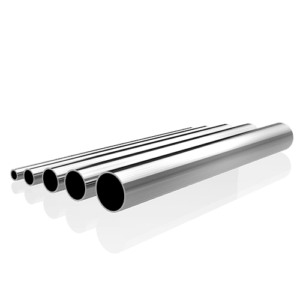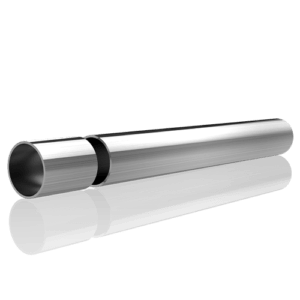Welcome to My Blog!
Before we dive into the content, I’d love for you to join me on my social media platforms where I share more insights, engage with the community, and post updates. Here’s how you can connect with me:
Facebook:https://www.facebook.com/profile.php?id=100090063158454
Now, let’s get started on our journey together. I hope you find the content here insightful, engaging, and valuable.
Introduction

In modern engineering, the choice of materials significantly impacts the performance, durability, and cost-effectiveness of various applications. Among the many materials available, Qilu 410 stainless steel tubing stands out due to its unique combination of properties. This blog explores the numerous benefits of Qilu 410 stainless steel tubing, detailing why it is a preferred choice in various engineering applications. From its mechanical properties to its corrosion resistance, we will uncover how Qilu 410 stainless steel tubing enhances engineering projects.
What is Qilu 410 Stainless Steel Tubing?
Overview of Qilu 410 Stainless Steel
Qilu 410 stainless steel is a martensitic stainless steel known for its high hardness and excellent wear resistance. It is specifically designed to offer a balance of good corrosion resistance, strength, and toughness. This makes it an ideal choice for applications requiring durability and resistance to wear and tear.
Composition and Properties
Qilu 410 stainless steel tubing is primarily composed of iron, chromium (12-14%), and a small percentage of carbon (up to 0.15%). This composition contributes to its unique properties, including high strength, moderate corrosion resistance, and the ability to be hardened through heat treatment.
Key Benefits of Qilu 410 Stainless Steel Tubing
Excellent Corrosion Resistance
One of the primary benefits of Qilu 410 stainless steel tubing is its corrosion resistance. The chromium content in the alloy provides a protective layer that resists rust and oxidation, making it suitable for use in environments where exposure to moisture and chemicals is common.
High Strength and Durability
Qilu 410 stainless steel tube is known for its high tensile strength and durability. This strength is achieved through the steel’s martensitic structure, which allows it to withstand heavy loads and mechanical stress. The tubing’s durability makes it ideal for demanding applications in various engineering sectors.
Wear Resistance
The wear resistance of Qilu 410 stainless steel tube is another significant advantage. Its hardness makes it resistant to abrasion and erosion, ensuring that it maintains its structural integrity over time. This property is particularly beneficial in applications involving high-friction environments.
Heat Resistance and Toughness
Qilu 410 stainless steel tubing exhibits good heat resistance, allowing it to perform well under high-temperature conditions. Additionally, its toughness ensures that it can absorb impacts and resist cracking, which is crucial for applications involving thermal cycles and mechanical stress.
Applications in Modern Engineering
Aerospace Industry
In the aerospace industry, Qilu 410 stainless steel tube is used in various components due to its strength and heat resistance. Its ability to withstand extreme conditions makes it suitable for aircraft parts, fuel systems, and other critical components.
Automotive Industry
The automotive industry benefits from Qilu 410 stainless steel tubing in the manufacturing of exhaust systems, brake components, and structural elements. Its corrosion resistance and wear properties enhance the performance and longevity of automotive parts.
Oil and Gas Sector
In the oil and gas sector, Qilu 410 stainless steel tube is utilized in applications such as pipelines, valves, and fittings. The tubing’s resistance to corrosion and wear ensures reliable performance in harsh environments and contributes to the efficiency of operations.
Construction and Infrastructure
Qilu 410 stainless steel tubing is also used in construction and infrastructure projects. Its strength and durability make it suitable for structural supports, railings, and other components exposed to environmental stressors.
Comparative Analysis: Qilu 410 vs. Other Stainless Steel Grades
Mechanical Properties
| Property | Qilu 410 Stainless Steel | 304 Stainless Steel | 316 Stainless Steel |
|---|---|---|---|
| Tensile Strength (MPa) | 550-750 | 520-720 | 520-720 |
| Hardness (HRC) | 40-50 | 18-22 | 20-25 |
| Elongation (%) | 12-15 | 40-50 | 40-50 |
Corrosion Resistance
| Property | Qilu 410 Stainless Steel | 304 Stainless Steel | 316 Stainless Steel |
|---|---|---|---|
| Corrosion Resistance (Rating) | Moderate | High | Very High |
Heat Resistance
| Property | Qilu 410 Stainless Steel | 304 Stainless Steel | 316 Stainless Steel |
|---|---|---|---|
| Max Operating Temperature (°C) | 650 | 870 | 870 |
Manufacturing and Fabrication

Processing Techniques
Qilu 410 stainless steel tubing can be fabricated using various techniques, including machining, welding, and bending. Its machinability allows for precision manufacturing, while its weldability ensures that it can be joined with other materials to create complex structures.
Heat Treatment
Heat treatment is a critical process for Qilu 410 stainless steel tube, as it enhances its hardness and strength. Common heat treatment processes include annealing and quenching, which adjust the material’s properties to meet specific engineering requirements.
Surface Finishing
The surface finish of Qilu 410 stainless steel tube can be customized to suit different applications. Common finishes include polished, brushed, and matte, each offering different aesthetic and functional benefits.
Conclusion
Qilu 410 stainless steel tubing offers a range of benefits that make it a valuable material in modern engineering. Its excellent corrosion resistance, high strength, durability, and wear resistance contribute to its suitability for various applications across different industries. Whether used in aerospace, automotive, oil and gas, or construction, Qilu 410 stainless steel tubing enhances performance and reliability.
By understanding and leveraging the unique properties of Qilu 410 stainless steel tubing, engineers and manufacturers can achieve superior results and ensure the longevity of their projects. Investing in high-quality tubing like Qilu 410 can lead to significant improvements in both performance and cost-effectiveness.
FAQ
What is Qilu 410 stainless steel tubing?
Qilu 410 stainless steel tubing is a type of martensitic stainless steel known for its high hardness, strength, and moderate corrosion resistance. It is used in various engineering applications due to its durability and wear resistance.
How does Qilu 410 compare to other stainless steel grades?
Qilu 410 stainless steel offers higher hardness and wear resistance compared to grades like 304 and 316. However, it has moderate corrosion resistance compared to the high corrosion resistance of 304 and 316 stainless steels.
What are the common applications of Qilu 410 stainless steel tubing?
Qilu 410 stainless steel tubing is commonly used in aerospace, automotive, oil and gas, and construction industries. It is suitable for applications requiring strength, durability, and resistance to wear and corrosion.
How is Qilu 410 stainless steel tubing fabricated?
Qilu 410 stainless steel tubing can be fabricated using machining, welding, and bending techniques. Heat treatment processes such as annealing and quenching are also used to enhance its properties.
What are the heat treatment processes for Qilu 410 stainless steel tubing?
Heat treatment processes for Qilu 410 stainless steel tubing include annealing and quenching. These processes adjust the material’s hardness and strength to meet specific engineering requirements.
